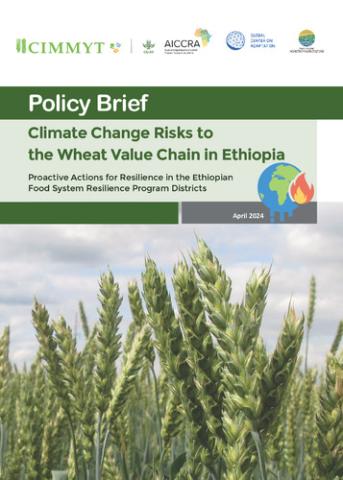Abstract
Wheat is an important cereal crop that has a substantial contribution to the national economy and food security. However, the crop is becoming vulnerable to climate change and variability risks. Compressive climate change risk analysis results highlighted the following challenges in major wheat-growing areas. • Meher season rainfall in wheat-producing areas is projected to increase by up to 211 mm and rainfall variability will increase up to 29% during the 2035 period.
• Belg season rainfall will decline by 17-39 mm and rainfall variability will increase up to 41% during the
2035 period.
• Meher season minimum and maximum temperatures will increase by 1.1 to 1.5°C and 0.9 to 1.4°C,
respectively, during the 2035 period.
• Belg season minimum and maximum temperatures will increase by 1.4 to 1.5°C and 1.3 to 1.4°C,
respectively, by the 2035s.
• Rainfall extremes like wet spells, wet days, heavy rainfall, and very heavy rainfall days will increase in
wheat-growing areas.
• Diurnal temperature range (DTR) will decline while tropical nights will increase.
Spatiotemporal changes in major climatic variables will pose challenges at all stages of the wheat value chain followed by several unwelcome socio-economic consequences.

